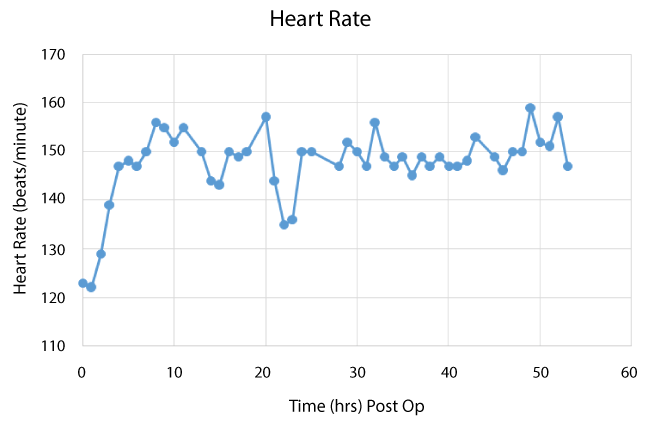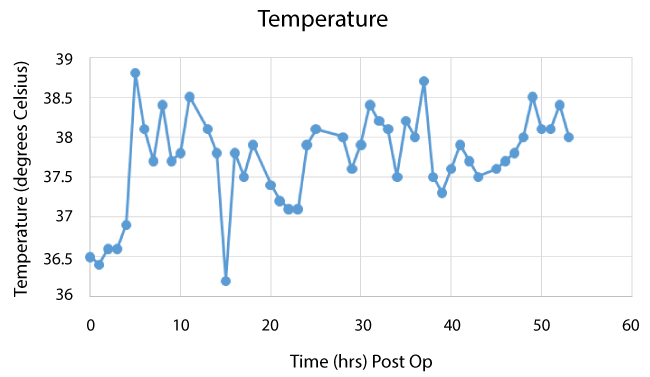Clinical Medical Reviews and Case Reports
Extubation Airway Emergency after Spinal Fusion Using Bone Morphogenetic Protein
Bradley J Scherer1*, Brian D Benneyworth2, Mara E Nitu2 and Brian D Leland2
1Department of Pediatrics, Indiana University School of Medicine, USA
2Section of Pediatric Critical Care, Indiana University School of Medicine, USA
*Corresponding author: Bradley J Scherer, MD, Department of Pediatrics, Riley Hospital for Children at Indiana University Health, Indiana University School of Medicine, 705 Riley Hospital Drive, Room 5900, Indianapolis, IN 46202-5225, USA, Tel: +317-944-7337, E-mail: bjschere@iupui.edu
Clin Med Rev Case Rep, CMRCR-4-161, (Volume 4, Issue 3), Case Report; ISSN: 2378-3656
Received: February 08, 2017 | Accepted: March 28, 2017 | Published: March 30, 2017
Citation: Scherer BJ, Benneyworth BD, Nitu ME, Leland BD (2017) Extubation Airway Emergency after Spinal Fusion Using Bone Morphogenetic Protein. Clin Med Rev Case Rep 4:161. 10.23937/2378-3656/1410161
Copyright: © 2017 Scherer BJ, et al. This is an open-access article distributed under the terms of the Creative Commons Attribution License, which permits unrestricted use, distribution, and reproduction in any medium, provided the original author and source are credited.
Keywords
Bone morphogenetic protein, Tracheostomy, Extubation failure
Introduction
Bone morphogenetic proteins (BMPs) represent a family of differentiation factors that promote bone formation and remodeling [1]. Clinical use of recombinant BMP was approved by the US Food and Drug Administration (FDA) in 2002 for surgery of the anterior lumbar spine to promote bone fusion [2]. Due to robust bone forming properties, BMP use may increase the likelihood of bony fusion thereby decreasing the undesired outcome of pseudarthrosis or nonunion [3]. Two BMP products are commercially available for clinical use, one of which is rhBMP-2, known as INFUSE. (MedtronicSofamorDanek, Memphis, Tennessee).
Although BMPs are FDA approved for use only in the lumbar spine, there has been an increase in off-label use at other spine levels, including the cervical spine [4]. Complications following use have been reported for both lumbar as well as cervical fusion procedures. Serious complications of cervical fusion procedures using BMP's include neck swelling, airway edema, dysphagia, and seromas [4-9]. These findings have been associated more frequently with anterior cervical fusion procedures.There are fewer studies describingthe clinical impact of side effects associated with use of rhBMP-2 in patients undergoing posterior cervical spine fusion procedures, particularly in the pediatric population. We present a case of an 11-year-old female status post posterior cervical spine fusion with rhBMP-2 who suffered immediate extubation failure due to severe obstruction from upper airway edema. Endotracheal intubation could not be successfully performed, and ultimately the patient requiredemergent bedside tracheostomy.
Case Report
An 11-year-old female who was admitted to the pediatric intensive care unit (PICU) intubated and mechanically ventilated with severe traumatic brain injury and occipito-cervical dislocation following a high speed motor vehicle collision, underwent both posterior arthrodesis from occiput to C3 and open reduction of cranio-cervical dislocation on hospital day 7. As part of the procedure, osteopromotive material (INFUSE) was used to help with bone formation and growth. The patient tolerated the procedure well and returned to the ICU intubated and sedated.
Over post-operative days 1-3 (hospital days 8-10), the patient became more responsive, began moving extremities spontaneously, and responding to commands. Despite the dramatic improvement in neurologic status, the patient became persistently febrile and tachycardic approximately 9 hours after the procedure on hospital day 8 (Figure 1 and Figure 2). At the time, the patient had been receiving antibiotics for 4 days to treatmethicillin sensitive staphylococcus aureus bacteremia. Daily blood cultures since hospital day 4 showed no growth, blood counts were reassuring, and daily chest x-rays showed stable right lower lobe airspace disease consistent with atelectasis.

.
Figure 1: Heart rate trend from immediately post operation to time of failed extubation attempt (53 hours post operation).
View Figure 1

.
Figure 2: Temperature trend from immediately post operation to time of failed extubation attempt (53 hours post operation).
View Figure 2
On hospital day 10 (53 hours post-operation), the patient demonstrated good lung compliance requiring minimal ventilator settings and low oxygen requirements. Her sedation was weaned and she was appropriately responsive to commands. Tracheal extubation was performed in the PICU. Upon removal of the endotracheal tube, the patient demonstrated severe distress with forceful retractions but undetectable air exchange on exam, suggesting severe upper airway obstruction. Saturations quickly fell to below 50% and bag-mask ventilation was initiated. Rapid sequence intubation was attempted without the ability to visualize the vocal cords due to a beefy red and grossly edematous tongue, epiglottis, and posterior oropharynx. The anesthesia team was called to the bedside for assistance with emergent airway management and additional attempts were made to secure an oral-tracheal airway, including direct laryngoscopy and fiberoptic bronchoscopy, all of which were unsuccessful. Ultimately, general surgery performed an emergent bedside tracheostomy.
After the event, the patient was noted to have progressive tongue swelling and continued to be febrile and tachycardic over the next week. Patient continued to undergo infectious workup, including daily complete blood counts, daily blood cultures, daily chest x-rays, and an abdominal ultrasound looking for splenic abscess in the days following the failed extubation attempt. Other than a white blood cell count of 29.1 k the day after the event (which declined over the next several days), all blood cultures and the abdominal ultrasound were unremarkable for an infectious process. Furthermore, daily chest x-rays continued to show stable right lower lobe airspace disease consistent with atelectasis. Fortunately, the patient was able to be weaned to room air through her tracheostomy over the 3 days following her tracheostomy. She remained hospitalized for a total of 45 days receiving inpatient rehabilitation for her traumatic brain injury. She was ultimately discharge home without the need for supplemental oxygenation. 9 months later, at the time of this submission; patient has not yet been decannulated.
Discussion
Our patient had undergone a posterior cervical fusion with rhBMP 2 (INFUSE), and likely,the emergency upper airway obstruction complicating her tracheal extubation were related to rhBMP-2's associated inflammatory response.Researchers have looked into the mechanism of action that results in the inflammatory response associated with rhBMP-2. The proposed mechanism for the soft tissue edema occurs via activation of endothelial cells and stimulation of vascular endothelial growth factor [10-12]. As BMP activates the pathways required to promote bony fusion, it initiates these inflammatory pathways as well, contributing to tissue edemamanifesting as neck swelling and dysphagia [5,13,14]. Furthermore, the coupling of osteogenesis with angiogenesis is hypothesized to resultin leaky, immature blood vessels that contribute to increased fluid in adjacent tissues [8]. As a result, perioperative steroids have been describes as good therapeutic agents that may help prevent these complications [6,15,16]. Our patient did not receive perioperative steroids.
This discussion requires distinction between the soft tissue edema caused by rhBMP-2 and soft tissue edema from the fusion operation itself. Timing of the onset of edema is useful in this instance. Literature identifies swelling complications occurring immediately after cervical fusion surgery as likely secondary to prolonged or excessive retraction on the anterior cervical soft tissues. On the contrary, cervical swelling associated with rhBMP-2 usage occurred on average postoperative day 4.2 [6]. Our patient did not appear to demonstrate signs or symptoms of cervical soft tissue edema during her immediate postoperative course, but rather at the time of extubation (53 hours/2.2 days post-op).
We use this case to highlight the importance of extreme vigilanceregarding airway management for patients in whom BMP's is used both for anterior but also posterior cervical spine fusion. Because of the morbidity experienced by the patient, we encourage other practitioners to acknowledge this patient population as high risk for airway swelling and implement processes to safeguard them such as increased vigilance and awareness of the progressive swelling, caution against early extubation, increased utilization of leak pressures, potential perioperative steroids, and consideration of primary tracheostomy depending on the clinical context.
Funding Source
No funding was secured for this study.
Financial Disclosure
The authors have no financial relationships relevant to this article to disclose.
Conflict of Interest
The authors have no conflicts of interest to disclose.
Contributors' Statement Page
Bradley J. Scherer and Brian D Leland: Drs. Scherer and Leland conceptualized and designed the case report, drafted, revised, and approved the final manuscript as submitted.
References
-
Urist MR, Huo YK, Brownell AG, Hohl WM, Buyske J, et al. (1984) Purification of bovine bone morphogenetic protein by hydroxyapatite chromatography. Proc Natl Acad Sci U S A 81: 371-375.
-
https://www.fda.gov/ohrms/dockets/ac/04/briefing/4024b1_05_DRAFT%20SSED.htm.
-
Burkus JK, Sandhu HS, Gornet MF, Longley MC (2005) Use of rhBMP-2 in combination with structural cortical allografts: clinical and radiographic outcomes in anterior lumbar spinal surgery. J Bone Joint Surg Am 87: 1205-1212.
-
Cahill KS, Chi JH, Day A, Claus EB (2009) Prevalence, complications, and hospital charges associated with use of bone-morphogenetic proteins in spinal fusion procedures. JAMA 302: 58-66.
-
Shields LB, Raque GH, Glassman SD, Campbell M, Vitaz T, et al. (2006) Adverse effects associated with high-dose recombinant human bone morphogenetic protein-2 use in anterior cervical spine fusion. Spine (Phila Pa 1976) 31: 542-547.
-
Smucker JD, Rhee JM, Singh K, Yoon ST, Heller JG (2006) Increased swelling complications associated with off-label usage of rhBMP-2 in the anterior cervical spine. Spine (Phila Pa 1976) 31: 2813-2819.
-
Singh K, Ahmadinia K, Park DK, Nandyala SV, Marquez-Lara A, et al. (2014) Complications of spinal fusion with utilization of bone morphogenetic protein: a systematic review of the literature. Spine (Phila Pa 1976) 39: 91-101.
-
Lindley TE, Dahdaleh NS, Menezes AH, Abode-Iyamah KO (2011) Complications associated with recombinant human bone morphogenetic protein use in pediatric craniocervical arthrodesis. J Neurosurg Pediatr 7: 468-474.
-
Vaidya R, Carp J, Sethi A, Bartol S, Craig J, et al. (2007) Complications of anterior cervical discectomy and fusion using recombinant human bone morphogenetic protein-2. Eur Spine J 16: 1257-1265.
-
Shahlaie K, Kim KD (2008) Occipitocervical fusion using recombinant human bone morphogenetic protein-2: adverse effects due to tissue swelling and seroma. Spine (Phila Pa 1976) 33: 2361-2366.
-
Sorescu GP, Sykes M, Weiss D, Platt MO, Saha A, et al. (2003) Bone morphogenic protein 4 produced in endothelial cells by oscillatory shear stress stimulates an inflammatory response. J Biol Chem 278: 31128-31135.
-
Xiao YT, Xiang LX, Shao JZ (2007) Bone morphogenetic protein. Biochem Biophys Res Commun 362: 550-553.
-
Crawford CH 3rd, Carreon LY, McGinnis MD, Campbell MJ, Glassman SD (2009) Perioperative complications of recombinant human bone morphogenetic protein-2 on an absorbable collagen sponge versus iliac crest bone graft for posterior cervical arthrodesis. Spine (Phila Pa 1976) 34: 1390-1394.
-
Zara JN, Siu RK, Zhang X, Shen J, Ngo R, et al. (2011) High doses of bone morphogenetic protein 2 induce structurally abnormal bone and inflammation in vivo. Tissue Eng Part A 17: 1389-1399.
-
Boakye M, Mummaneni PV, Garrett M, Rodts G, Haid R (2005) Anterior cervical discectomy and fusion involving a polyetheretherketone spacer and bone morphogenetic protein. J Neurosurg Spine 2: 521-525.
-
Hiremath GK, Steinmetz MP, Krishnaney AA (2009) Is it safe to use recombinant human bone morphogenetic protein in posterior cervical fusion? Spine (Phila Pa 1976) 34: 885-889.





